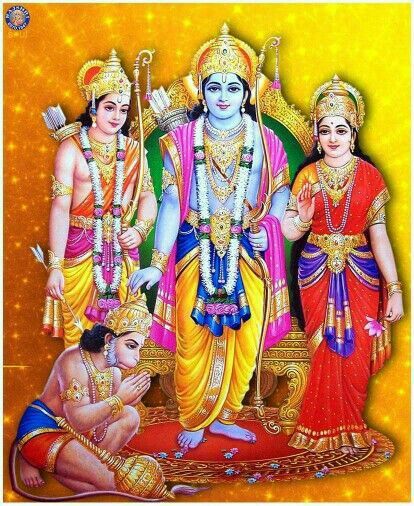The Chhandogya Upanishad - 43: Swami Krishnananda
================================================================
Wednesday, 22 Nov 2023. 06:30.
CHAPTER 4: AN ANALYSIS OF THE NATURE OF THE SELF
Section 5: Importance of Brahmacharya
Mantras - 3 & 4.
Post-43.
================================================================
Mantram-3.
"Atha yad-anasakyanam ity-acaksate brahmacaryam eva tat,
esa hy-atma na nasyati ym brahmacaryena-nuvindate,
atha yad-aranyayanam ity-acaksate brahmacaryam eva tat.
tad-arasca ha vai nyascar-navau brahmaloke tritiyasyam ito divi,
tad-airammadiyam sarah, tad-asvatthah soma-savanah,
tad-aparajita pur-brahmanah, prabhuvimitam hiranmayam."
================================================================
Anasakyana is a vow of fasting. This vow of fasting which people engage themselves in is also equivalent to brahmacharya. Here again, an etymological semblance is introduced into the interpretation. Atman does not perish at any time. Therefore, this imperishable character of the Atman is comparable with the imperishable results that accrue to one by the practice of the religious vow of fasting. Whatever benefits accrue to a person by this vow come to him spontaneously by self-control. Forest dwelling which is the vanaprastha life, living in seclusion, etc., are all great vows and austerities, no doubt. But whatever one gains by these austerities, vows and practices, one gains merely by self-control, because it is the highest austerity and nothing can be comparable to it.
A person who transcends mortal experience and is blessed with an access into the realm of Brahma has to pass through various mystical experiences. Some of the words contained in the passage that we are discussing refer to certain subtle experiences in the higher realms of Being which a seeker would encounter on his ascent to Brahman, the Absolute. It is said here that there are two oceans in the realm of Brahman filled with nectar where the world this and world that both come together in a fraternal embrace. It is as if two oceans join together to form a single ocean. Ara and Nya are the two names given to these two different oceans. They exist beyond this world. They are in the third world altogether, not in the physical world, not in the atmospheric world or even the astral world, but in the spiritual world they are. There is another miraculous thing there which one can see after going there. There is a tank filled with exhilarating nectar which is the food of the gods and the food of those who have shed their physical bodies. It is immortal bliss that one would experience there. It does not mean that it is actually a physical food which one would taste through the tongue. As I mentioned, they are subtle references to mystical experiences of the soul, which are referred to here as contact with tons of nectar of exquisite sweetness. There is a tree there which yields all one asks for, which exudes nectar from its body. It is a huge peepul tree, very vast in its expanse from every pore of which nectar exudes. It is the kalpavriksha, as the Puranas call it, a tree that gives anything you ask. If you think something while sitting under it, it immediately materialises itself. That is called kalpavriksha. Such a kind of peepul is present there in this higher realm where nectarine immortality flows, as it were, from every side. This is the city of Brahman which cannot be entered by those whose minds are extrovert, whose senses seek sense objects outside. It is an invincible fortress of Brahman. No one can conquer it, no one can pierce through it, no one can break through it, no one can touch it or contact it, because it is not a physical fort. It has very, very rarely been conquered by anyone. Those who have been wedded to world experience through the mind and the senses are unfit to contact or enter into this city. There is inside this city a hall which is called prabhuvmitam, built by Brahma himself, shining like gold, resplendent in every way, into which the soul is introduced. These experiences are also described in other Upanishads in different ways, all very mystical indeed, referring to different exhilarating experiences of consciousness through which we pass when we get separated from the body and come nearer and nearer to that which is more and more universal. Language fails here and words cannot express what all this really means. It is only an indication symbolically of miraculous experiences and wonders which we cannot dream of, through which we have to pass as a result of self-control and practice of meditation on Brahman.
=============================================================
Mantram-4.
"Tad-ya evaitavaram ca nyam carnavau brahma-loke brahma-caryenanuvindanti,
tesam evaisa brahma-lokah tesam sarvesu lokesu kamacaro bhavati."
===============================================================
Freedom untrammelled is our reward if we could practise this technique of meditation. We would be the possessors of all these treasures, the nectars and the trees exuding ambrosia, and the oceans of nectar, etc., referred to here. All these would be our possessions and we would be rejoicing in these experiences and be one with them provided that—a great condition is here—we are able to withdraw our senses and mind and centre our consciousness in that which we call Brahman. Then we are free and this freedom is what we call moksha, Liberation.
*****
Next
Section 6: Course After Death
To be continued
================================================================


.jpg)





.jpg)

Comments
Post a Comment